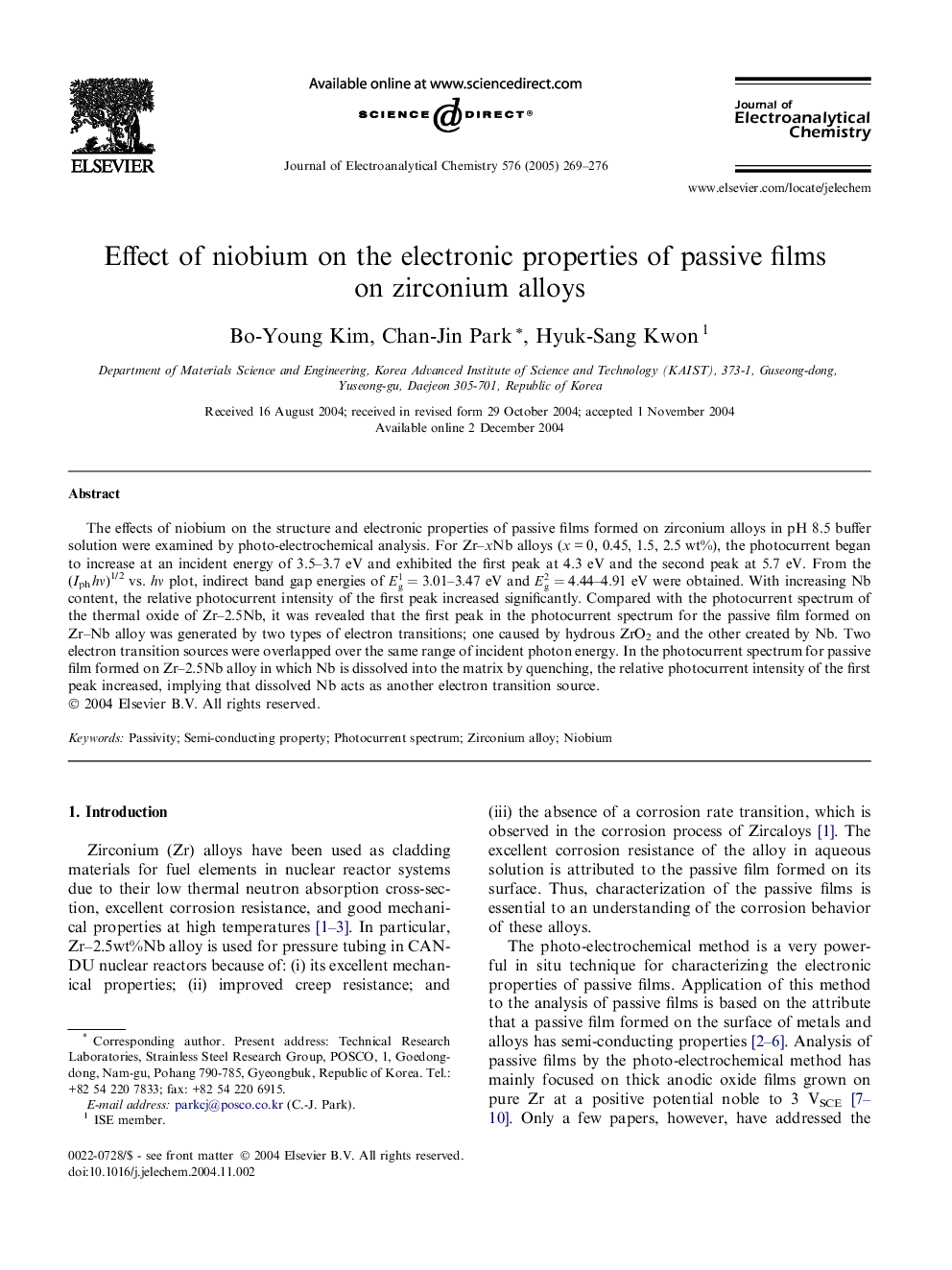| Article ID | Journal | Published Year | Pages | File Type |
|---|---|---|---|---|
| 10276267 | Journal of Electroanalytical Chemistry | 2005 | 8 Pages |
Abstract
The effects of niobium on the structure and electronic properties of passive films formed on zirconium alloys in pH 8.5 buffer solution were examined by photo-electrochemical analysis. For Zr-xNb alloys (x = 0, 0.45, 1.5, 2.5 wt%), the photocurrent began to increase at an incident energy of 3.5-3.7 eV and exhibited the first peak at 4.3 eV and the second peak at 5.7 eV. From the (Iph hν)1/2 vs. hν plot, indirect band gap energies of Eg1=3.01-3.47eVandEg2=4.44-4.91eV were obtained. With increasing Nb content, the relative photocurrent intensity of the first peak increased significantly. Compared with the photocurrent spectrum of the thermal oxide of Zr-2.5Nb, it was revealed that the first peak in the photocurrent spectrum for the passive film formed on Zr-Nb alloy was generated by two types of electron transitions; one caused by hydrous ZrO2 and the other created by Nb. Two electron transition sources were overlapped over the same range of incident photon energy. In the photocurrent spectrum for passive film formed on Zr-2.5Nb alloy in which Nb is dissolved into the matrix by quenching, the relative photocurrent intensity of the first peak increased, implying that dissolved Nb acts as another electron transition source.
Related Topics
Physical Sciences and Engineering
Chemical Engineering
Chemical Engineering (General)
Authors
Bo-Young Kim, Chan-Jin Park, Hyuk-Sang Kwon,
